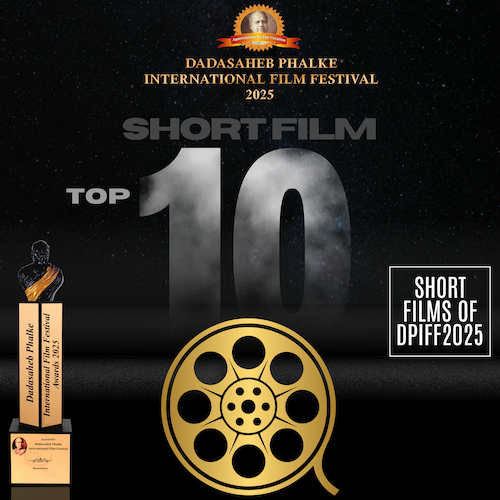A Step-by-Step Guide to Crafting Compelling Stories for Short Films

A storyboard with diverse characters in various scenes, including a Caucasian male in a suit, a Middle-Eastern female wearing a lab coat, and a Black male dressed as a pilot. Background includes a burning building, a stealthy submarine, and an antique locket.
Introduction
Creating short films is an exciting way for filmmakers to showcase their talent and creativity. Despite the challenges that aspiring filmmakers face in a highly competitive industry, including limited resources and funding opportunities, short films remain a popular choice because they can tell impactful stories in a shorter time.A strong and compelling story is crucial for any successful short film. It is what captivates the audience and leaves a lasting impression. In this guide, we will explore the different aspects of crafting such stories, including:
- The key elements of a compelling story
- The power of visual development in enhancing the narrative
- Navigating the technical aspects of production from script to screen
- Bringing the story to life through visual effects and post-production techniques.
The final touch: the importance of sound design and music composition
Developing a story is an intricate craft that involves combining different elements to grab the audience’s attention and evoke emotions. Here’s a breakdown of how character, plot, and theme work together to create a compelling story:
Character
1. Understanding the Key Elements of a Compelling Story
Compelling stories often focus on well-developed characters that audiences can emotionally connect with. Whether it’s a main character overcoming challenges or a villain with intricate motives, strong characters drive the story forward and keep viewers interested.
Plot
The series of events in a story make up its plot. Effective storytelling often includes techniques like foreshadowing, where subtle clues about future events are hinted early on, creating anticipation and curiosity. Symbolism can also play a vital role in conveying deeper meanings and adding layers to the plot.
Theme
Themes are the underlying messages or commentaries that give a story depth and significance. They can explore timeless ideas such as love, bravery, or grief, striking a chord with audiences on a deep level. Non-linear storytelling structures, where the timeline of events is not presented chronologically, can bring complexity and fascination to the narrative.
Acclaimed short films provide excellent examples of these storytelling techniques in action. For instance, understanding Stephen King’s storytelling approach can offer valuable insights into creating compelling narratives.
- The use of foreshadowing in “The Sixth Sense” builds tension and keeps audiences guessing until the climactic reveal.
- The non-linear storytelling structure of “Memento” adds an extra layer of intricacy to its thought-provoking plot.
Understanding how these key elements work together is crucial for crafting a story that deeply impacts viewers even after it ends.
2. The Power of Visual Development in Enhancing Narrative
Visual elements play a crucial role in conveying the mood and atmosphere of a short film, enhancing the overall storytelling experience. From production design to cinematography and color palette, these elements work together to create a visually captivating narrative that engages the audience. Let’s explore the power of visual development in enhancing narrative:

Production Design
Creating concept art and establishing the visual style of a film are vital steps in the production process. Production design sets the tone and helps create a cohesive world for the story to unfold. Whether it’s designing intricate sets or crafting unique props, production design adds depth and authenticity to the narrative.

Cinematography

The way a story is captured on camera can greatly impact its emotional impact. Different camera angles, movements, and framing techniques can evoke specific emotions or highlight key moments in the narrative. For example, a close-up shot can convey intimacy or intensity, while a wide-angle shot can establish a sense of scale or isolation.
Color Palette
The colors used in a film can evoke specific moods and emotions. Warm tones like red and orange may suggest passion or danger, while cool tones like blue and green may evoke calmness or sadness. A carefully chosen color palette can enhance the story’s themes and create visual cohesion throughout the film.
To illustrate these points, let’s look at some case studies where unique visual approaches have elevated storytelling in notable short films:
- In Pixar’s “Piper,” the use of vibrant colors and realistic textures not only brought the adorable characters to life but also emphasized the beauty of nature and conveyed themes of perseverance.
- Guillermo del Toro’s “The Shape of Water” used production design to create a visually striking world that blended fantasy with reality. The intricate sets and detailed costumes added depth to the characters’ journeys and enhanced the overall narrative.
By paying attention to these visual elements, filmmakers can elevate their storytelling and create a more immersive experience for the audience.
3. From Script to Screen: Navigating the Technical Aspects of Production
Crafting a compelling short film involves not only developing a strong story but also understanding the technical aspects of production. From writing the script to visualizing the film through storyboarding and animatics, these steps are crucial in bringing your story to life on screen.
The Purpose and Structure of a Screenplay
A screenplay serves as a blueprint for your film, guiding the director, actors, and crew in translating your story idea into visuals. It’s important to understand the purpose and structure of a screenplay in order to effectively convey your narrative.
Purpose
A screenplay presents the dialogue, action, and visual elements that make up your film. It captures the essence of your story and guides the production process.
Structure
A screenplay typically follows a three-act structure, consisting of setup, confrontation, and resolution. Each act is divided into scenes that advance the narrative.
When crafting dialogue for your characters, it’s essential to make it feel natural and serve the purpose of advancing the story. Consider these practical tips:
- Character Voice: Ensure each character has a distinct voice and way of speaking that aligns with their personality traits.
- Subtext: Use subtext to add depth to your dialogue by implying underlying emotions or intentions.
- Show, Don’t Tell: Instead of explicitly stating information, find ways to show it through actions or visuals.
Storyboarding: Visualizing Your Film
Storyboarding is an invaluable tool for pre-visualizing your film. It involves creating a series of sequential drawings or images that represent key shots and scenes. Here’s why storyboarding is important:
- Visual Planning: Storyboards help you plan shot compositions, camera angles, and character blocking, ensuring a cohesive visual narrative.
- Pacing and Timing: By visually mapping out the story beats, storyboarding allows you to refine the pacing and timing of your film.
- Feedback and Collaboration: Storyboards provide a tangible visual reference that can be easily shared with your team for feedback and collaboration.
To learn more about how to make a storyboard effectively, you can refer to this comprehensive guide on how to make a storyboard.
Animatics: Conveying the Flow of Your Film
Once you have your storyboard, you can take it a step further by creating an animatic. An animatic is a rough, animated version of your storyboard that includes timing, temporary music, and sound effects. It helps you convey the pacing, rhythm, and overall flow of your film.By utilizing these techniques, you can effectively navigate the technical aspects of production and ensure that your story is translated onto the screen as envisioned.
Bonus Tip: Exploring Game Writing Opportunities
If you have a passion for storytelling and are considering exploring opportunities beyond traditional film production, then venturing into game writing might interest you.
4. Bringing the Story to Life through Visual Effects and Post-Production Magic
When it comes to creating a compelling short film, visual effects and post-production play a crucial role in enhancing the overall production value. By using techniques such as 3D modeling, texturing, lighting, rendering, and compositing, filmmakers can bring their story to life in a visually stunning and immersive way.
Key Points to Consider
1. 3D Modeling
Modeling 3D assets is an important step in creating realistic and detailed environments, sets, props, and characters for your short film. By carefully crafting these elements, you can transport your audience into the world of your story and make it feel more authentic.
Texturing involves applying surface details to 3D models to make them appear more realistic and visually appealing. This process adds depth and complexity to your scenes, making them more visually engaging for the audience.
Lighting is a powerful tool that helps set the mood and atmosphere of your short film. By strategically placing lights and adjusting their intensity and color, you can create different emotions and enhance the storytelling elements of your film.
4. Rendering Images
Rendering is the process of generating the final images of your scenes using specialized software. This step brings together all the elements you have created – models, textures, and lighting – into a cohesive visual experience.
5. Compositing Rendered Images
Compositing is the art of combining different elements from multiple sources into a single seamless image or scene. It involves layering various visual elements such as live-action footage, computer-generated imagery (CGI), special effects, and backgrounds to create a cohesive final result.
By utilizing these techniques effectively, you can elevate the production value of your short film and take your storytelling to new heights. Whether it’s creating realistic worlds or adding fantastical elements through visual effects, the possibilities are endless.The goal is to enhance your story and create a visually captivating experience for your audience. So don’t be afraid to experiment and push the boundaries of what is possible in post-production.
5. The Final Touch: Importance of Sound Design and Music Composition
Sound design and music composition are crucial in bringing a short film to life. They can:
- Enhance the storytelling
- Create atmosphere
- Emphasize key moments
- Guide the audience’s emotional interpretation of the visuals
Here are some key points to consider:
1. Soundscapes
Soundscapes refer to the overall audio environment of a film. By carefully selecting and layering different sounds, such as ambient noises, background music, and environmental effects, filmmakers can create a rich and immersive experience for the audience. For example, the sound of rain falling or birds chirping can establish a specific setting or mood.
2. Foley Artistry
Foley artistry involves creating and recording sound effects that synchronize with the actions on screen. From footsteps to door creaks, foley artists use various props and techniques to produce realistic sounds that enhance the authenticity of the film. These subtle details can greatly contribute to the overall impact of a scene.
3. Music Selection
The right music can evoke powerful emotions and elevate the storytelling in a short film. Filmmakers need to consider the genre, tempo, and tone of the music to ensure it complements the visuals and enhances the desired emotional response from the audience. Whether it’s a haunting melody or an upbeat track, music can help convey the message and mood of a scene effectively.
To illustrate these points, let’s take an example from a short film called “The Silent Piano.” In this film, there is minimal dialogue, but the interplay between sound design and music creates a captivating experience for viewers. The soundscapes of raindrops falling on leaves and distant thunder build tension in key moments, while delicate piano compositions emphasize the emotional journey of the main character.
By understanding how sound design and music composition can contribute to storytelling, aspiring filmmakers can leverage these elements to enhance their own short films. The careful selection and implementation of soundscapes, foley artistry, and music can add depth, realism, and emotional impact to the visuals, creating a truly compelling cinematic





